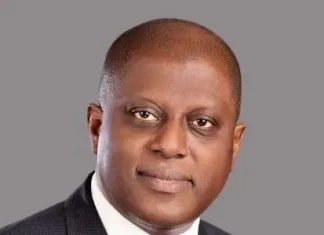By Lechi Eke
Realist writers cut across the globe from France to Russia, to the United Kingdom, to Germany and other places. Russian realism is basically socialist realism. Socialism is the basic technique of Russian Literature and literary criticism. It explores Russian revolutionary development, requiring from the artist the truthful concrete representation and history of the Russian politico. However, this changed after Stalin’s death.
As we wind-up on the era of Literary Realism, we look at some of the writers who made Russian realism thick, and some other very important writers.
Alexander Pushkin (1799-1837) founded the Russian literary language. Known as the Russian Shakespeare, Pushkin applied the techniques of realism and symbolism. As we said that there is always the presence of realism in the work of every age, Pushkin who started out as a romantic writer, ended up a realist. His masterpiece (magnum opus) is Eugene Ongene.
Vladimir Nabokov was a Russian-American novelist and entomologist. 7-times finalist of Russian national book award, Nabokov wrote over nine novels, his best being Lolita, written in Russian and English. It is a classic. His books are widely read.
Anton Chekhov (1860-1904) was a physician who loved writing (plays and short stories). He said of his dual interest in fields so far removed from each other, “Medicine is my lawful wife and Literature, my mistress; when I get tired of one, I spend my night with the other.” He was well-known for his novels: The Seagull and Uncle Vanya. One of his literary realism classics is his novel, The Cherry Orchard.
Ivan Bunin (1870-1953) was a Noble Laureate in Literature (1933), the first in Russia. Coming from a home with a gambler father, Bunin couldn’t get a quality education, but he persevered and wrote himself to the top with such work as the short story, “Dark Avenues”, an autobiographical work, The Life of Erseniev and the novels: The Village and Dry Calley. Bunin was noted for his classical tradition, strict artistry and realism in his work.
One of the most widely read Russian writers is Fyodor Dostoyevsky (1821-1881), a short story writer, novelist, essayist, journalist and philosopher. He was a military engineer by training. The context of his work depicts and surveys human psychology: the study of behaviour of mind; embracing thought, and conscious and unconscious experiences.
He was imprisoned for deserting the army and joining a socialist group, and this became the basis of his many writings as he told the stories of his experiences in prison in such works as: The Insulted and the Injured, House of the Dead and Writer’s Notes on Summer Nights.
His books were translated into more than 170 languages!
There are so many other great writers from the era of literary realism, some of them; it would be a sin not to mention before running along.
A must mention writer in the creation of literary realism is Stendhal (Marie-Henri Beyle (1783-1842). Stendhal is a nom de plume that Beyle gave himself while sojourning in the German city of Stendal, but to make it sound truly German, he added the h.
Beyle was a man who used lots and lots of pen names, as many as 26 pen names. He was a prolific writer. He was also a morally weak fellow pursuing everything in skirts which gave him the syphilis that led to his untimely death.
Considered a Romantic realist, Stendhal’s works draw attention for their elements of incongruity, psychology and the historical. His chef d’oeuvre (masterpiece) is Le Rouge et le Noir (The Red and the Black). He was also well-known for his novel, La Chartreuse de Parme (The Chatterhouse of Parma).
Then, Mary Anne Davis best known by her pen name George Eliot was a realist writer of the Victorian age, a must mention. She was an English novelist, poet, journalist and translators. Under the pseudonym of George Eliot, she blessed the world with seven outstanding novels. Many of us must have read her very popular novel, Silas Maner. Her novel Adam Bede is one of the classics in literary realism.
Eliot is known for her realism and psychological insight. Her novels are politically incisive. Although not religious, Eliot had respect for “religious tradition and its ability to maintain a sense of social order and morality.” She herself wasn’t strong on morality having stayed in an extra-marital relationship for 24 years from 1854-1878 with her partner, George Henry Lewes. She later married John Cross in 1880, the same year she died.
Although Realism is too descriptive and detailed to employ verse, (the Novel is the vehicle of literary realism) nonetheless, men of letters, such as the renowned second name on the lips of literature students after William Shakespeare who lived ahead of the era of literary realism, Alexander Pope, employed just that in his work, Rape of the Lock.
Alexander Pope (1688-1744) was the most quoted English poet after the Bard, William Shakespeare. Although he was not born in the era of literary realism, his poem Rape of the Lock written in 1712, revised in 1714 and republished again in 1717, is a classical example of literary realism.
The poem Rape of the Lock is a mock heroic couplet written as a satire on Pope’s society, depicting the lifestyle of some of his contemporaries. The poet engaging an unimportant incident and raising it to a height it didn’t deserve makes it a mock heroic. Of course we know that epic poems treat important matters. What made this poem a mock heroic is the high treatment of an unimportant object like a lock of hair cut from some lady’s head without permission. Well the vehicle carrying the message is exalted. Couplets, of course, occur when a poem possesses end rhymes in every two lines.
In 1714, Pope published a humourous essay titled A Key to the Lock to caution his readers not to take the poem seriously. The subject matter of the poem is not exotic. It is practical and factual. The poem portrays individuals caught in a society where their religious standing alienates them from good political standing.
The characters in the poem were Catholics in an era of Anglicanism, and that means that they cannot enjoy some privileges. In the time Pope lived in, that was the situation, and the poem was a true representation of real people based on real life event (quotidian) told the poet by his friend John Caryll. In fact, all the features or characteristics of literary realism are found in the poem except the genre or vehicle of narration which is not the novel. Below is an excerpt from the poem –
Rape of the Lock by Alexander Pope
What dire offence from am’rous Causes springs,
What mighty Contests rise from trivial things,
I sing – this verse to Caryl, Muse! is due:
This, ev’n Belinda may vouchsafe to view:
Slight is the subject, but not so the Praise,
If She inspire, and He approve my Lays.
Say what strange Motive, Goddess! cou’d compel
A well-bred Lord t’ assault a gentle Belle?
O say what stranger cause, yet unexplor’d,
Cou’d make a gentle Belle reject a Lord?
In tasks so bold, can little Men engage,
And in soft Bosoms, dwells such mighty Rage?
Sol through white Curtains shot a tim’rous Ray,
And ope’d those eyes that must eclipse the Day :
Now Lap-dogs give themselves the rousing Shake,
And sleepless Lovers, just at Twelve, awake :
rice rung the Bell, the Slipper knock’d the Ground,
And the press’d Watch return’d a silver sound.
Belinda still her downy Pillow prest,
Her guardian Sylph prolong’d the balmy rest.
’Twas He had summon’d to her silent Bed
e morning-dream that hover’d o’er her Head.
A Youth more glitt’ring than a Birth-night Beau
( at ev’n in slumber caus’d her Cheek to glow)
Seem’d to her Ear his winning Lips to lay,
And thus in W hispers said, or seem’d to say.
Fairest of Mortals, thou distinguish’d Care
Of thousand bright Inhabitants of Air!
If e’er one Vision touch’d thy infant thought,
Of all the Nurse and all the Priest have taught,
Of airy Elves by Moonlight Shadows seen,
The silver Token, and the Circled Green,
Or Virgins visited by Angel-pow’rs,
With Golden Crowns and Wreaths of heav’nly Flow’rs ;
Hear and believe! thy own Importance know,
Nor bound thy narrow Views to things below.
Some secret Truths, from Learned Pride conceal’d,
To Maids alone and Children are reveal’d :
What tho’ no Credit doubting Wits may give?
e Fair and Innocent shall still believe.
Know, then, unnumber’d Spirits round thee fly,
The light Militia of the lower sky :
These, tho’ unseen, are ever on the Wing,
Hang o’er the Box, and hover round the Ring.
Think what an Equipage thou hast in Air,
And view with scorn Two Pages and a Chair.
As now your own, our Beings were of old,
And once inclos’d in Woman’s beauteous Mold;
Thence, by a soft Transition, we repair
From earthly Vehicles to these of Air.
Think not, when Woman’s transient Breath is fled,
That all her Vanities at once are dead.











